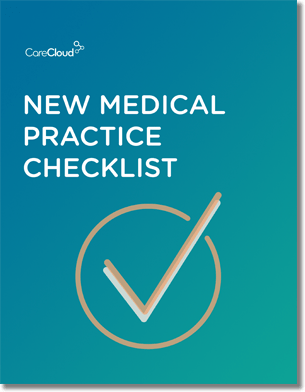When it comes to EHRS, the word ‘free’ can be misleading. Free EHRs rarely result in the kind of no-strings-attached reward that comes to mind when people think of a good deal.
While the appeal can be strong, the hidden expenses, heightened risk and unforeseen liabilities associated with free EHRs can cost your practice even more than web-based solutions relying on traditional payment models. Also, you’re probably not receiving the same level of technology or value of customer service paid software provides.
So today let’s take a look at these EHRs and why they’re not necessarily as ‘free’ as they’re made out to be.
Is It Really Free?
Free is obviously not a profitable business model, so why are free EHR providers giving away their products?
Chances are these vendors are selling ad space and your personal data to turn a profit.
Because users can sit in front of their EHRs for up to eight hours a day, selling ad space on the user interface can be appealing to advertisers. But if free EHR providers begin designating more and more space for ads, how satisfied will users really be?
Ad-based business models may also not be HIPAA compliant. Following the passing of the HIPAA omnibus final rule earlier this year, pop-up ads often associated with free EHRs could go from annoyance to hindrance.
The HIPAA updates enforce new restrictions on marketing, requiring providers to obtain patient authorizations “for all treatment and healthcare operations communications where the covered entity receives financial remuneration for making the communications for a third party whose product or service is being marketed.”
In other words, you must inform patients that you’ll be receiving a financial benefit for sharing the third party’s information with the patient. And while pop-up EHR ads aren’t named, it’s precisely the kind of marketing HIPAA is referring to.
Now imagine how much a free EHR will cost if its revenue model gets you into legal trouble. On the other hand, a paid EHR solution like CareCloud Charts is fully HIPAA compliant and can help you attest to Meaningful Use incentives as well.
There are also rumors that some of the more popular free EHRs will consider selling patient profiling power to pharmaceutical companies through tools similar to Facebook’s Graph Search feature.
Patients should be taken into consideration when making your EHR purchasing decision. If the rights to patient data are up-in-the-air, do you think they’ll feel comfortable knowing their doctor uses a free EHR? Chances are you’ll lose patients this way.
So if increased advertising and sketchy use of patient data is enough to persuade you to turn away from the free model, there’s no way to recover the time and money lost on training your staff, thereby making your free EHR a costly investment.
What You’re Missing
Let’s start with training, which is never included in any free EHR plan. Consultants don’t come cheap, normally between $1,500 and $4,000 a day, depending on the size of your practice.
Considering that training can take several weeks before your staff gets the full hang of the system’s functionality, you’re looking at tens of thousands of dollars. Free solutions often have limited functionality as well, at least in their supposedly free, leaner versions, and have a harder time adapting to your practice’s workflow.
A quality EHR vendor using the paid model will offer thorough training and implementation as part of their service fee.
Furthermore, many free EHRs don’t have the ability to streamline note creation, which means no templates, no forms, and no menus. This results in your practice wasting valuable time typing in diagnosis prescriptions, vitals, and allergies during every single patient encounter. If the idiom that time equals money is true, then this is a big no-no.
A problem you never have to worry about with paid EHR solutions.
Some free EHRs don’t offer doctors the ability to extract data in the event of an emergency or a system switch, which could come at a huge cost to your medical practice. Others take it a step further and charge patients to use the patient portal. Unforeseen fees and costs are another surefire way to lose patients.
So, as you can see, a free EHR is not necessarily free. The money you’ll spend on training costs and lose inpatient satisfaction far outweigh the low monthly costs associated with other web-based solutions.
Still don’t believe us? Listen to customer testimonials on how a powerful EHR really can transform your practice in the right way.
A version of this article was originally published on our sister site, Power Your Practice. Click here to read the original story.

Do you know what you need when setting up a new medical practice?



